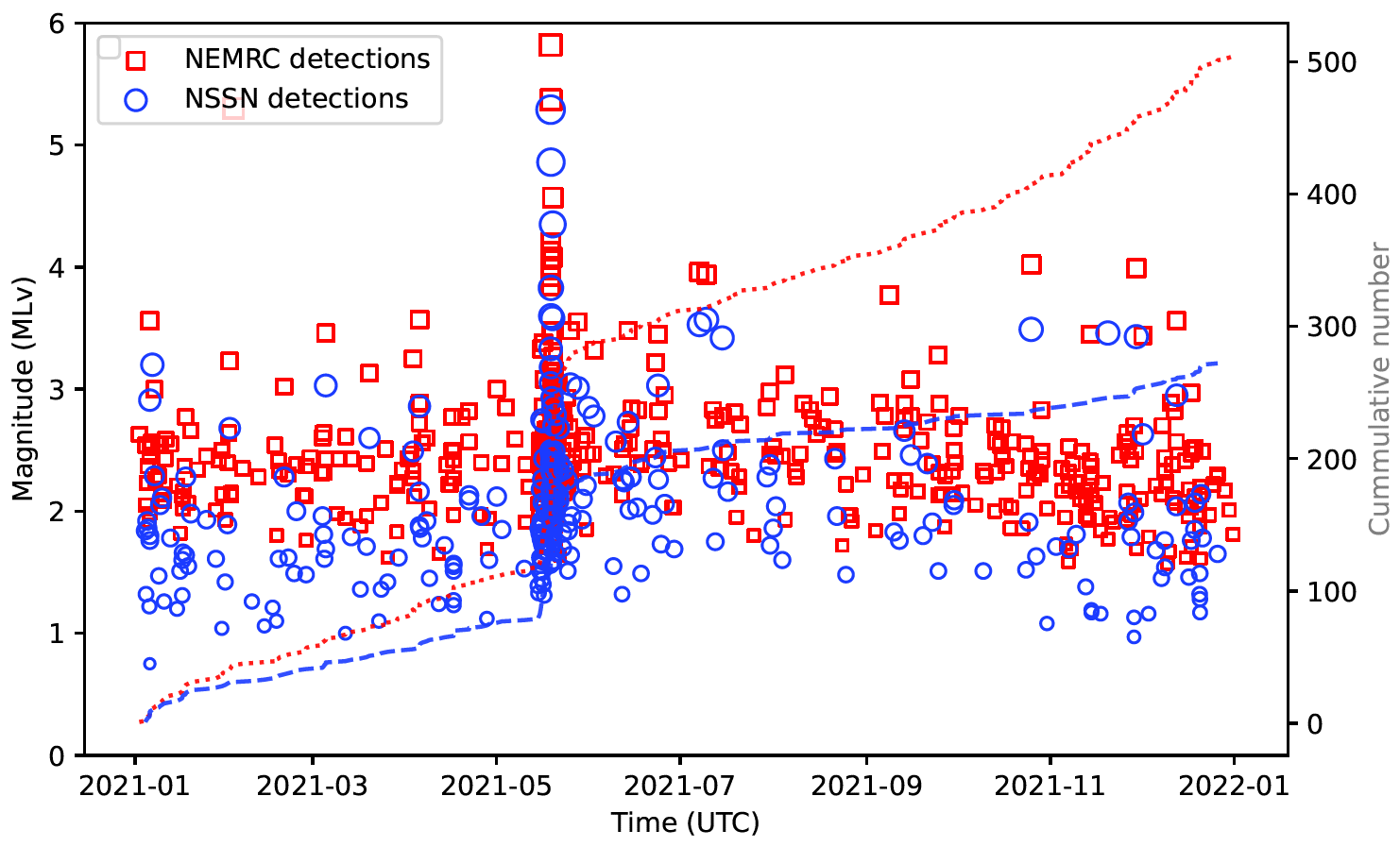Earthquake Monitoring in Nepal with a Low-Cost Seismic Network
By Mike Hotchkiss, Shiba Subedi and György Hetényi.

Seismic monitoring is crucial for earthquake-prone regions like Nepal, but traditional networks are expensive and often inaccessible for many developing countries. That’s where the Nepal School Seismology Network (NSSN) comes in. Using Raspberry Shakes, this educational initiative brings low-cost seismology into schools, enabling students and researchers to monitor local earthquakes and analyze data in real-time.
Launched in 2018, the NSSN was developed as part of the “Seismology at School in Nepal” program (www.seismoschoolnp.org), inspired by the devastating 2015 Gorkha earthquake. Initially, a single Raspberry Shake RS1D vertical component was deployed as a pilot, with the program expanding to 21 stations by 2019 and 33 by the end of 2022. Each of these stations is installed in a school, providing invaluable seismic data while also fostering educational opportunities for students. These low-cost sensors offer a great alternative to traditional, high-end systems or complement them in a flexible way, allowing for widespread seismic monitoring even in areas with limited resources.


The power Of Raspberry Shakes in Earthquake Monitoring
The NSSN network utilizes a mix of RS1D, RS3D, and RS4D models, providing high-quality data despite the challenges posed by background noise in school environments. During a year-long study of earthquakes in central-western Nepal, recently published in the journal Earth, Planet and Space, the NSSN’s data was compared to that of the National Earthquake Monitoring and Research Centre (NEMRC), Nepal’s national seismic observatory using a different station geometry and sensors. The results were remarkable: Raspberry Shakes detected 273 earthquakes, 250 of which matched the national catalog, with some even filling gaps in the national observatory’s data.
One key finding was that Raspberry Shakes are capable of detecting microseismic activity, even events with magnitudes as low as 0.8 proving that low-cost sensors are a viable solution for local seismic monitoring.

Why Low-Cost Earthquake Networks Matter
What sets the NSSN apart is its affordability and accessibility. A single professional seismic station can cost up to $25,000, whereas a Raspberry Shake setup costs less than $1,000. This difference makes Raspberry Shakes an ideal solution for areas like Nepal, where seismic hazards are high, but institutional funding is limited.
Beyond affordability, the NSSN has shown that low-cost networks can effectively complement professional systems. The network has been able to record detailed seismic data that aligns well with national catalogs, despite its more modest equipment. Moreover, by being installed in schools, the NSSN stations foster greater community engagement and education, inspiring students to participate in earthquake preparation, scientific research and contribute to seismic monitoring.

Educational Impact
The educational component of the NSSN is another major success. Students and teachers gain hands-on experience in seismic data collection and analysis, such as locating earthquakes using a tutorial, empowering them to understand the earthquake risks in their region. This program also raises awareness about earthquake safety and preparedness, which is vital for a country like Nepal, where seismic hazards are an ongoing concern and the people’s awareness level is far below satisfactory.
Through Raspberry Shakes, students can actively monitor seismic events in their own communities, giving them a unique learning experience that bridges the gap between theory and practice. With real-time data streamed online, the students also become part of a global citizen science network, contributing valuable data for both research and public awareness.

Conclusion
The NSSN’s success in using Raspberry Shakes to monitor earthquakes highlights the potential of low-cost seismic networks. Not only do these systems offer high-quality data that efficiently complements traditional networks, but they also provide educational opportunities and foster community engagement. For earthquake-prone regions like Nepal, this approach could revolutionize how we monitor and respond to seismic hazards, making it a model for other developing countries.
Through projects like this, Raspberry Shake continues to show how affordable seismology can be a game-changer in areas where traditional methods fall short.

Read more about this project and its findings in their recently published paper, “Local earthquake monitoring with a low-cost seismic network: a case study in Nepal.”